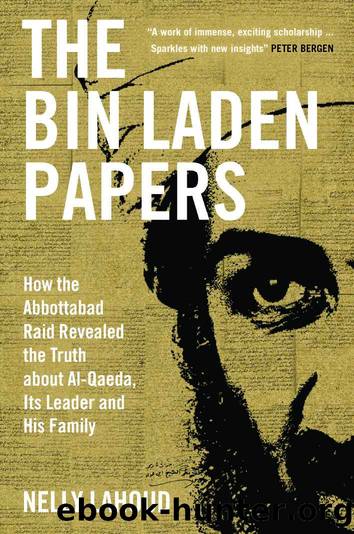The Bin Laden Papers: How the Abbottabad Raid Revealed the Truth About Al-Qaeda, Its Leader and His Family by Nelly Lahoud

Author:Nelly Lahoud [Lahoud, Nelly]
Language: eng
Format: epub
Tags: Political Science, Terrorism, History, Modern, 21st Century, Middle East, General
ISBN: 9780300265347
Google: yLppEAAAQBAJ
Publisher: Yale University Press
Published: 2022-04-11T19:00:00+00:00
The âNew Visionâ
Confined to his Abbottabad compound and with no visitors or phone calls to distract him, Usama had ample time to meditate on the actions of the Brothers. We discovered in Chapter Six that Usama decided to change al-Qaedaâs strategy in 2010. In the course of devising his new strategy, he thought long and hard about the Brothers who had lost sight of global jihad. He found himself comparing them to jihadi groups who were marked by their local jihad and had risen (and fallen) during the 1960s through the 1990s. He wrote to his associates:
You are well aware that many of the groups that insisted on starting their jihad against the local enemy had their path obstructed and did not achieve their goals. For example, when the Muslim Brotherhood in Syria fought against the regime of Hafez al-Asad for nearly a decade, it led to a catastrophe when the regime eliminated thousands of them during the uprising in Hama [in 1982]. This caused a shock, and though it has been nearly three decades, its effects continue. The same is true about the Islamic Group and the Jihad Group in Egypt, and the brothers in Libya, Algeria, and the Arabian Peninsula.164
Usama feared that the ânew generationâ of jihadis operating under the umbrella of al-Qaeda were destined to suffer the same fate. Because they were preoccupied with fighting the âlocal enemy,â i.e., the regimes of Muslim-majority states, Usama lamented that they had become a âliabilityâ to global jihad.
What was Usama going to do about this?
Usamaâs new al-Qaeda strategy included a component to tame the Brothers, and the âerrorsâ of AQAP were mostly on his mind. During his final year, Usama was working on a ânew visionâ for al-Qaeda that would see jihadism usher in a ânew phase of reform and development.â165 His priority was to put a swift end to the Brothersâ indiscriminate attacks in Muslim-majority states. âWe shall only enter into a struggle with the local regimes,â Usama determined, âwhen the leader of global kufr [i.e., America] is drained of its powers and is near collapse.â Until then, the Brothers should only resort to violence if they are attacked by the regimes. âThis way,â he reasoned, and in the eyes of the world, âit would be obvious that we are oppressed and the rulers are the oppressors.â166
In addition, Usama wanted to concentrate terrorism in the hands of al-Qaeda, and centralize all media releases by jihadi groups. To that end, he tasked Atiya with preparing âa memorandum of understanding,â laying out al-Qaedaâs guidelines and requiring the leaders of regional jihadi groups âto be most careful about curbing military attacksâ:
Some of the attacks they carried out should have been halted, in view of the unnecessary civilian casualties that resulted. .â.â. It does not escape you that Muslimsâ blood is sacred, not to mention that the Muslim public was repulsed by such attacks. .â.â. It is necessary to reinforce to all the Brothers the importance of being transparent, sincere, and fulfilling their promises, and of being wary of betraying their oaths.
Download
This site does not store any files on its server. We only index and link to content provided by other sites. Please contact the content providers to delete copyright contents if any and email us, we'll remove relevant links or contents immediately.
| Bahrain | Egypt |
| Iran | Iraq |
| Israel & Palestine | Jordan |
| Kuwait | Lebanon |
| Oman | Qatar |
| Saudi Arabia | Syria |
| Turkey | United Arab Emirates |
| Yemen |
Empire of the Sikhs by Patwant Singh(22977)
The Wind in My Hair by Masih Alinejad(5034)
Rise and Kill First by Ronen Bergman(4705)
The Templars by Dan Jones(4629)
The Rape of Nanking by Iris Chang(4139)
12 Strong by Doug Stanton(3509)
Blood and Sand by Alex Von Tunzelmann(3140)
Babylon's Ark by Lawrence Anthony(2622)
The History of Jihad: From Muhammad to ISIS by Spencer Robert(2572)
No Room for Small Dreams by Shimon Peres(2320)
The Turkish Psychedelic Explosion by Daniel Spicer(2314)
Gideon's Spies: The Secret History of the Mossad by Gordon Thomas(2305)
Inside the Middle East by Avi Melamed(2305)
Arabs by Eugene Rogan(2262)
The First Muslim The Story of Muhammad by Lesley Hazleton(2219)
Come, Tell Me How You Live by Mallowan Agatha Christie(2212)
Bus on Jaffa Road by Mike Kelly(2103)
Kabul 1841-42: Battle Story by Edmund Yorke(1986)
1453 by Roger Crowley(1967)
